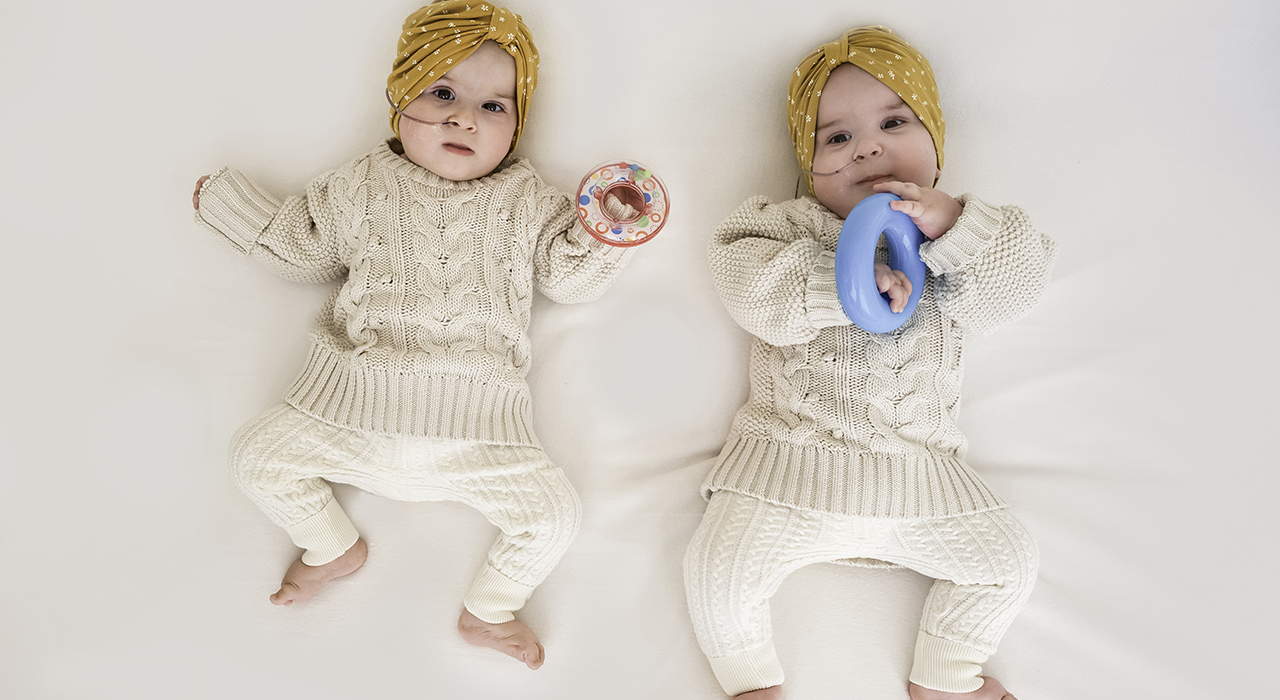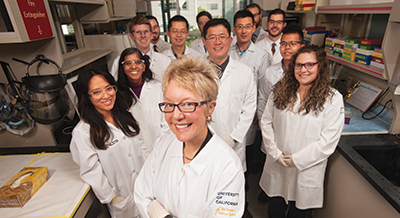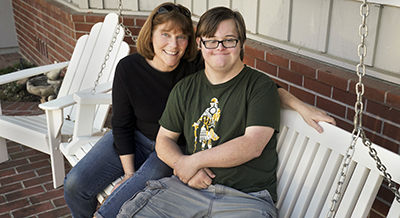After months of intense planning and practice, surgeons at UC Davis Children’s Hospital successfully separated nine-month-old conjoined twins Abigail and Micaela Bachinskiy in a marathon surgery this past October. The two girls were craniopagus twins — born fused at the head, a condition that occurs approximately only once every 2.5 million births.
The 24-hour surgery — the first separation of conjoined twins at UC Davis Medical Center — took place in a UC Davis Children’s Surgery Center operating room custom-built for the procedure’s high complexity. Team members included more than 30 surgeons, nurses, anesthesiologists and other key surgical staff, led by pediatric neurosurgeon Michael Edwards, M.D.; Granger Wong, M.D., D.M.D., craniofacial surgeon and Chief of Plastic and Reconstructive Surgery; director of pediatric anesthesiology Rajvinder Dhamrait, M.D.; and Children’s Surgery Center nursing lead Aida Benitez, R.N.
First task: A safe delivery
Mom Liliya, 33, discovered she was pregnant with conjoined twins at 11 weeks gestation. Although initially told she would have to terminate her pregnancy, her doctor referred her to the UC Davis Fetal Care and Treatment Center, inland Northern California’s comprehensive fetal diagnosis and therapy center.
Fetal MRIs there provided more details about the twins’ anatomic structures and informed the development of a set of manikin dolls, used to help identify positioning challenges.
Delivery team members practiced other simulations and scenarios for months to prepare for the numerous possible risks: compromised airways, collapsed lungs, the need for a CPAP machine to aid in breathing or IV placement. CPAP headgear was custom designed for each girl.
Abigail and Micaela were born at UC Davis Children’s Hospital in December 2019, and spent seven weeks in the NICU before going home.
From virtual reality goggles to house calls
Surgeons decided to separate the twins at nine months, both to keep shared blood vessels and organs from developing further and to allow for adequate tissue expansion for later coverage of the defect after separation. With a date scheduled, they began preparing in earnest for what may be the most complicated case of their careers.
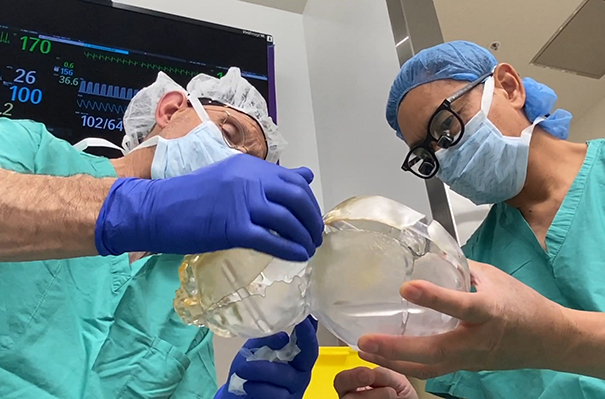
Along the way, they carefully tracked the twins’ growth through MRIs and CT scans.
In June, Wong’s team placed custom designed tissue expanders under the skin of the girls’ heads, to encourage enough skin growth for skull coverage upon separation.
3-D printing allowed generation of multiple models of the twins’ fused skulls, useful for precision planning and practice. Surgeons were also able to explore inside their heads with the use of mixed reality goggles, which offered an augmented view of the complex network of blood vessels to be detangled and separated.
On the more traditional side, surgeons also made house calls to the family, helping them avoid travel during the COVID-19 pandemic.
‘A choreographed ballet’
Finally, 10 months of preparation and practice became reality as a team of more than 30 surgical professionals embarked on the operation itself. With so many key players in one space, each with a distinct role to play, the team members were divided by color. Leaders Edwards, Wong, Dhamrait and Benitez donned black caps. Team Purple took care of Micaela, while Team Orange cared for Abigail; they donned surgical caps in either purple or orange for easy visibility in the operating room. Surgical residents wore grey caps and could assist with either girl. Purple and orange masking tape were used to label equipment for the respective teams in the operating room.
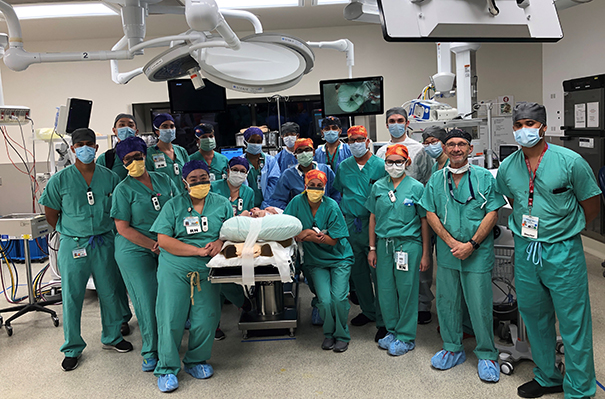
Surgical challenges included dividing large veins and brain matter that connected the twins so they could have independent circulatory systems. The team performed a fistula ligation, a process that involved clipping and separating shared veins. The twins required five position changes — all posing potential complications — and blood transfusions.
Throughout the long procedure, the care team provided regular updates to the family, who was praying and nervously awaiting news about their girls.
Twenty-four hours later, on Sunday morning, the previously joined twins were resting comfortably — and separately — in their room in the UC Davis PICU. Abigail and Micaela were able to face and see each other for the first time.

